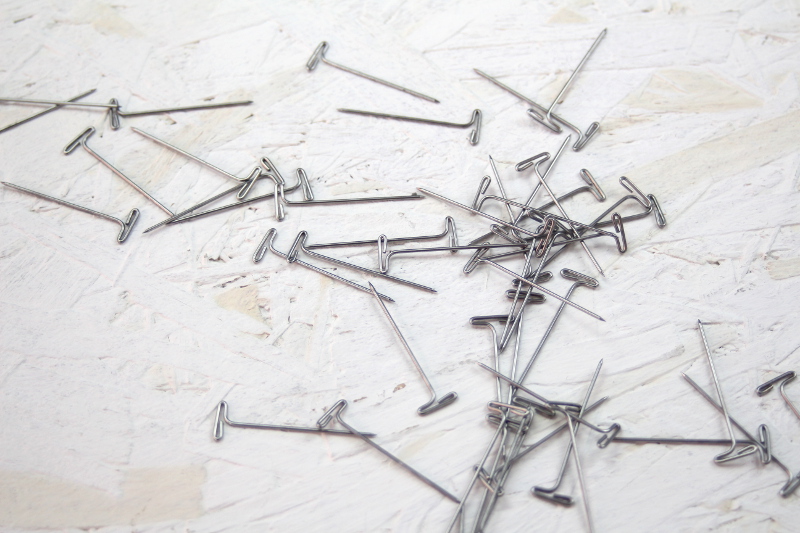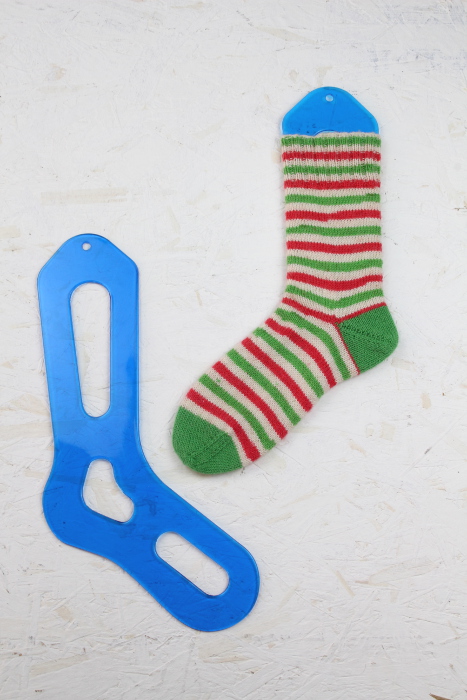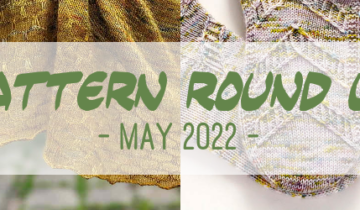Blocking is one of those words that knitters bandy around and, like lots of knitting and crochet terminology, it doesn’t really mean much until you’ve had it explained. Along with washing, blocking is the final step of your project and it is the step which transforms your project to an accomplished conclusion.
There are 2 mains types of blocking, wet blocking and steam blocking. The first consists of hand-washing your finished item prior to blocking while the second consists of applying steam with an iron. Both methods aim to relax the fibres, making each stitch a little more even, plump and the overall fabric drapier. Wet blocking is a little bit safer as you do not need to worry about the heat of the iron damaging the fabric. It also gives you the opportunity to add some wool wash to your fabric which will increase its softness. We won’t go into much detail about hand washing techniques today but please click here if you want to read our full tutorial about knitwear care.

Steam blocking is a fun and quick way to apply moisture onto your fabric however it doesn’t work with all projects and shall never-ever be used on acrylic which will melt under the heat. To steam block simply put your iron on a steam setting and hold it over your knits. Alternatively place a wet white cotton cloth or a wet towel over your item and press directly onto it. Regarding the temperature of your iron please refer to this article. Never press directly onto cables or you will flatten them out. Also, it is always a good idea to do a test on your swatch and see how it reacts to the heat. Steam blocking is great to use for something that won’t need to be washed in the future. For garments I would always recommend wet blocking.
By wet blocking you effectively set you knitwear into its final shape and dimensions. This is achieved by pinning and stretching your knit onto a soft surface prior to drying. If you do not have blocking mats, a yoga mat or towel will do just the trick. As your finished item dries it will retain its new dimensions. Not all knits need to be pinned down for blocking and some can simply be laid down flat to dry.

Shawls – particularly lacy one – can be stretched quite a bit in order to reach their intended dimensions. This is particularly important with lace as stretching open up the motif, showing it off and making it more defined. Such projects will only really work with wet blocking as the fabric requires to be completely wet to maximise the impact of blocking. To block a shawl or a blanket we’d recommend using blocking wires. Blocking wires are slipped through the stitches along the edge of a knit before being pinned down onto the blocking matt with T-Pins. These are great tools to create those smooth regular edges characteristic of shawls and blankets. In this tutorial by Interweave you can clearly see the benefits of blocking both on opening the lace and accentuating the points around the edges. To create a straight line simply slip your blocking wire through every other stitches along the edge of your shawl/blanket.

Garments and accessories like mitts or hats can either be pinned down or laid flat to dry. This mostly depend on how happy your are with the dimensions of your finished piece. If you’re not, simply pin it down following the measurements suggested in the pattern. Blocking is also great to accentuate the shape of a garment like, for example, a tapered body or tapered sleeves. If your item features lace or cables you will have to pin it down and stretch it in order to open up the motif which would otherwise remained bunched up and lack of definition. Same with socks. A plain pair can be left to its own devices to dry while a lacy or cable pattern will benefit from being blocked using a set of sock blockers.
To conclude blocking is an essential step in the completion of a project which should never be ignored. It settles the fibres, evens out the fabric, give it more drape, and a polished, professional look. It can erase or lessen some problems in the fit and altogether reveal a pattern as we’ve seen with lace and cables. If you’ve never tried blocking before please give it a go and I can promise that you will never look back.
Until Next Time… Happy Knitting!




 No products in the basket.
No products in the basket.